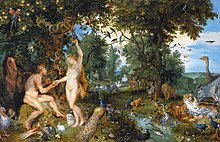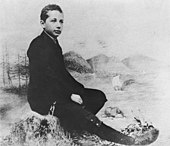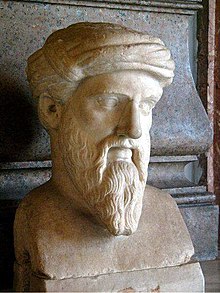The Reporters' Lab at Duke University maintains a database of fact-checking organizations that is managed by Mark Stencel and Bill Adair. The database tracks more than 100 non-partisan organizations around the world. The Lab's inclusion criteria is based on whether the organization
- examines all parties and sides;
- examines discrete claims and reaches conclusions;
- tracks political promises;
- is transparent about sources and methods;
- discloses funding/affiliations;
- and whether its primary mission is news and information.
By region
Africa
- Africa Check: Africa's first independent fact-checking organisation with offices in Kenya, Nigeria, South Africa, Senegal and the UK checking claims made by public figures and the media in Africa.
India
- altnews is a fact-checking website.
- Boom is a fact-checking digital journalism website.
- SMHoaxSlayer is a broad spectrum fact-checking website with verifying social media hoaxes and scams circulating in India.
- Factly FACTLY is one of the well known Data Journalism/Public Information portals in India. Each news story on FACTLY is backed by factual evidence/data from official sources that is either available in the public domain or that is collated/gathered/collected using tools such as the Right to Information (RTI).
Middle East
Israel
- thewhistle fact-checks statements said by Israeli politicians.
Iran
Asia
Japan
- GoHoo: Launched by a nonprofit association Watchdog for Accuracy in News-reporting, Japan (WANJ or 一般社団法人 日本報道検証機構) on November 16, 2014. Crowd-funded approx. 1.6 million yen through Ready For. Awarded Social Business Grand Prize 2012 Summer.
- Japan Center of Education for Journalists (JCEJ): Fosters journalists and fact-checkers by referring to a Journalist's Guide to Social Sources published by First Draft News, a project of the Harvard Kennedy School's Shorenstein Center. JCEJ itself also debunks falsehoods.
Europe
- BBC Reality Check
- Full Fact: An independent fact-checking organisation based in the UK which aims to "promote accuracy in public debate", launched in 2009.
- The FactCheck blog: A fact-checking blog run by the Channel 4 News organization in the UK.
- Les Décodeurs: French fact-checking blog run by Le Monde.
- Pagella Politica: an Italian fact-checking website.
- Ellinikahoaxes.gr: a Greek fact-checking website launced in 2013. Debunks hoaxes, urban legends, fake news, internet scams and other stories of questionable origin.
- Factchecker.gr: an independent Greek fact-checking website launced in February 2017 specializing in pseudoscience and medical frauds. Affiliated to Ellinika Hoaxes.
- Bufale.net: an Italian fact-checking website
- Ferret Fact Service: Scotland's first fact-checker launched in April 2017 after a grant from the Google Digital News Initiative.
- Mimikama: Austrian fact-checking website which mainly focuses on Facebook hoaxes in the German and Dutch language area.
- Miniver.org: First dedicated fact-checking web in Spain, launched in 2017, with the purpose of debunking fake news. Accredited by Google as fact-checking organization.
Former Soviet Union countries
- FactCheck Georgia: a project of the Tbilisi-based think-tank Georgia's Reforms Associates (GRASS), launched in 2013.
- VoxCheck: unveiled by VoxUkraine, an online economics and policy project, in 2015.
- FactCheck Ukraine: launched by the Kyiv-based Ukrainian Team of Reformers in 2016.
- Stopfake.org: launched by the Kyiv Mohyla Journalism School in 2014.
- Stopfals.md: launched by Association of Independent Press (API) from Republic of Moldova in 2017
Latin America
- Argentina: Chequeado.com
- Brazil: Agência Lupa, Aos Fatos, Boatos, Comprova, É isso Mesmo? (from O Globo), E-farsas, Portal EBC's Hoax reports, Truco no Congresso, UOL Confere
- Chile: ChileCheck, Del dicho al hecho, El Polígrafo (from El Mercurio)
- Colombia: Colombia Check, Detector de Mentiras
- Guatemala: Con Pruebas
- Mexico: Checa Datos, El Sabueso, Verificado
- Peru: OjoBiónico
- Uruguay: UYcheck
- Venezuela: Cotejo, Efecto Cocuyo, Verifikado
United States
- Climate Feedback, which is dedicated to fact-checking media coverage of climate change.
- FactCheck.org and FactCheckEd.org: non-partisan, nonprofit sister websites that are self-described "advocates for voters that aims to reduce the level of deception and confusion in U.S. politics," and serving as an educational resource for high school teachers and students, respectively (the latter founded 2005). They are projects of the Annenberg Public Policy Center of the Annenberg School for Communication at the University of Pennsylvania, and are funded primarily by the Annenberg Foundation.
- Fact Checker (The Washington Post): A project of The Washington Post, known for grading politicians on the factual accuracy of their statements with zero to four "Pinocchios." Created September 2007 by Post diplomatic writer Michael Dobbs specifically for the 2008 presidential campaign. Ceased operation 4 November 2008, but relaunched with a broader focus in January 2011, led by veteran Post diplomatic correspondent Glenn Kessler.
- Our.News crowdsources fact-checking from users for any news article, and allows users to rate news for spin, trust, accuracy, and relevance. Fact sources are both user-contributed and automatically scraped. Publisher and author information and statistics are also provided.
- PolitiFact.com: A service of the Tampa Bay Times - Created August 2007, uses the "Truth-o-Meter" to rank the amount of truth in public persons' statements. 2009 Pulitzer Prize Winner.
- Snopes.com focuses on, but is not limited to, validating and debunking urban legends and other stories in American popular culture.
- TruthOrFiction.com validates and debunks urban legends, Internet rumors, e-mail forwards, and other stories of unknown or questionable origin.
- RealClearPolitics' Fact Check Review aspires to offer quaternary-level critiquing of such tertiary-level efforts at fact-checking as those listed above. Within its inaugural review item on April 9, 2018, RCP writer Kalev Leetaru said its efforts at "checking the fact checkers" were to "explore how the flagship fact-checking organizations operate in practice (as opposed to their self-reported descriptions), from their claim and verification sourcing to their topical focus to just what constitutes a 'fact.'" Leetaru is a Georgetown University fellow in residence, holding the chair established there for study and promotion of "international values, communications technology and the global Internet."























